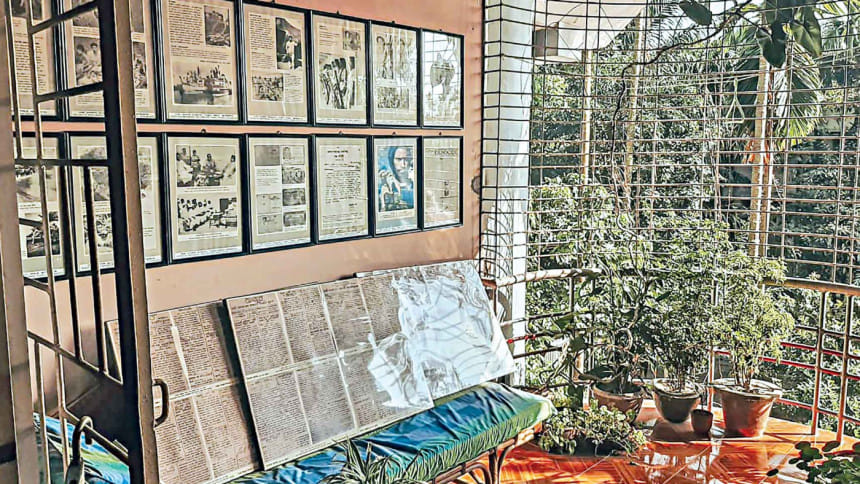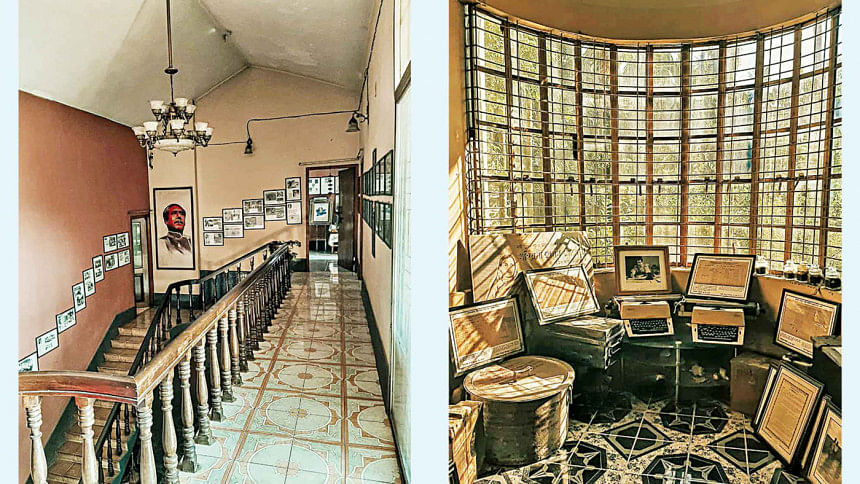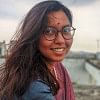Familial home turned into an archive: the story of the North Bengal Museum

Right at the heart of the small district of Kurigram stands a familial home. Except that it's not just a home, it's a home turned into a museum that displays rare local artefacts and documents from the time of the war of liberation. S.M. Abraham Lincoln, a law practitioner in the district of Kurigram, has collected these artefacts and documents for almost 20 years, founded the North Bengal Museum in his own familial home, and opened it for the masses in 2012.
Abraham Lincoln, the founder and the current Chairman of the trustee board of the North Bengal Museum, shares how he was motivated to set up the museum. From a very young age, he was keen on preserving the history of the liberation war, due to his own lived experiences of the war.
"Our family was targeted because my brother and my father were frontline freedom fighters. Everywhere we took shelter, the military invaded and burned the place," he shares. "Pakistan Military invaded Kurigram for the first time on April 7, 1971, and attacked the local police station. By the time they ceased fire, almost all the officers in the police station were killed. The bodies were recovered by my father and my elder brother. The families of the martyrs took shelter with us. Their tears are still fresh in my memory. That ambush at the police station was the first time the war directly touched me and the rest of my family."
More than 10 years ago, Lincoln worked as a Research Coordinator for the North Bengal region on 'The Liberation War Encyclopedia' project taken up by the Asiatic Society and simultaneously worked on a district-wise documentation project taken by Bangla Academy. In the 10 years of field-work for these two projects, he got his hands on many rare documents from the time of the liberation war. "It was truly unbelievable," he says. "I was able to retrieve many documents on time that testify against some of the most vicious war criminals of the region."
Later on, many of these documents were used by the International Crimes Tribunal (Bangladesh) in the prosecution against crimes against humanity in 1971. The judges and prosecutors of the tribunal paid multiple visits to his place to work on these documents. "That's when the idea of setting up a museum inside my home struck me. I felt the necessity to preserve the regional history of the liberation war, and got to work on it right away after consulting my family," he shares.
The museum contains many rare wartime relics and photographs from the frontline, torture cells, and documentation of the regional martyred freedom fighters and genocide. The displayed documents also include recruitment letters and applications submitted to the Rajakar Forces, applications asking for permissions from the Pakistan Military to loot and take over the properties of the religious minorities, and asking for compensation due to the losses that the members of the Rajakar Forces had to incur due to their participation in the regional massacres and case charge sheets against the members of the Rajakar Forces. These are the documents that were used as key evidence against the local war criminals by the International Crimes Tribunal.
There are other documents on the display that show the presence of a local civil administration and judiciary of the newly-formed Government of Bangladesh during the war of liberation. Documents on internal fundraiser activities during the war are also on display. These documents also confirm other political and cultural activisms besides the frontline war that were happening during the war. For example, some documents and articles confirm the appointment of various bodies to politically motivate frontline freedom fighters. Many of these appointed individuals belonged to the left-wing political spectrum and remained unnoticed in the mainstream retelling of history.

The museum also displays copies of "Agrodut", a hand-written newspaper published with news from the frontline war zones and circulated all around the region. This newspaper didn't only cover regional news, but also national and international ones. This was an initiative led and carried out by mostly left-wing activists and is an exemplary document of fierce and brave journalism, without a functional and operating press, carried out solely by the dedication and conviction of the journalists involved.
There are practically no fixed hours of visiting the museum, says Abraham Lincoln. "People come to visit from far away places, so we have to cater to the visitors even in very odd times. That poses an obstacle to our family life, but at this point, we have learned to live with it," he shares.
The museum also contains other historical relics from the pre-colonial era. A new establishment for the museum has been planned to be constructed at the adjacent plot, the foundation and construction of which is being funded by the Ministry of Liberation War Affairs, while the maintenance is being sourced by crowdfunding.

 For all latest news, follow The Daily Star's Google News channel.
For all latest news, follow The Daily Star's Google News channel. 



Comments